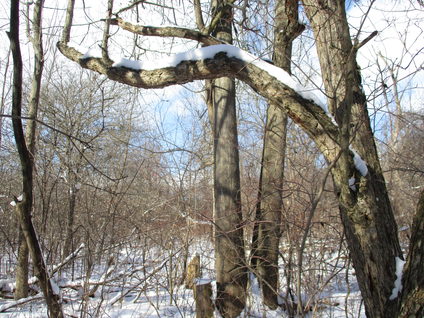
At 9:46 AM, August 13, 2018, in the Niagara Falls Clerk’s Department, Dr. John Bacher filed a letter of appeal against Amendment 128 to the Niagara Falls Official Plan. The amendment aims to pave over 120 of the 500 acre Thundering Waters Forest. Most of the forest is considered provincially protected wetland barred from development. At the same time, much of the amended lands is known as the Riverfront Community consisting of an unusual savanna complex dominated by a native shrub species, the Dotted Hawthorn. (Photo: Martin Munoz)
These hawthorn savannahs are also nesting areas for two at risk bird species: the Wood Thrush and the Eastern Wood Pewee. It is also the habitat for two threatened wildflowers: the spectacularly purple Dense Blazing Star and a regionally rare flower loved by butterflies, the Butterfly Milkweed. Both are iconic wildflowers characteristic of prairie-savannah environments, important for insects other valuable plant pollinators.
The richness in insect pollinators is one of the reasons that the area provides a great summer foraging habitat for the threatened Barn Swallow. Many other such areas have vanished because of agricultural pesticides but here they flourish in a landscape untouched since the first World War.
 Canada Geese flying over threatened Thundering Waters Forest. (Photo: Martin Munoz)
Canada Geese flying over threatened Thundering Waters Forest. (Photo: Martin Munoz)
Although hawthorn savannahs dominate the Amendment 128 lands, there also exist dry forests. These areas, designated by the Niagara Regional Official Plan as provincially significant woodlands, buffer the protected, provincially significant wetlands (PSW) of the Niagara Falls Slough Forest. Snapping Turtles, another species at risk, are frequently found in the pounded ruts of long abandoned roads throughout the Riverfront lands.
In the northern limits are future study areas for possible bat maternity roosting habitat of three species of endangered bats. The large block of intact forest is also regarded by the Ministry of Natural Resources and Forestry (MNRF) as a breeding spot for the endangered Acadian Flycatcher. According to the current recovery plan, there are only an estimated 75 breeding pairs surviving in Canada.

Potential Bat Roosting Area Thundering Waters Forest. (Photo: Martin Munoz)
There are three components of the Niagara Falls Slough Forest which are in close proximity to a railway strip. In the springtime, spectacular symphonies of mating Wood, Chorus and Spring Peeper frogs can be heard here. These frogs and the Blue Spotted Salamander frequently migrate between these components. With that in mind, Amendment 128’s failure to link these wetlands with protective corridors could cause great detriment to local wildlife.
The weirdest provision of Amendment 128 is its call for the “deforestation” of provincially significant woodlands. Among the trees found on these lands is the threatened Kentucky Coffee Tree. The massive deforestation is being advocated on the basis of incorrectly anticipated effects of mass Ash die off from the Emerald Ash Borer. In this scenario, Niagara Falls is taking part in a false approach to land use planning, backed by skewed science.
The protection of Thundering Waters may take up to three Appeals to win the legal battle.
Original article was written by Dr. John Bacher, Chair and Greenbelt Campaign leader at Sierra Club Ontario. Check out his site here.
